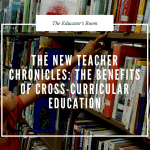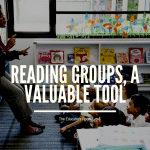Have you signed up for The Educator’s Room Daily Newsletter? Click here and support independent journalism!
Picture books are colorful, vibrant, and creative…so let’s not ditch them after chapter books come along! As a parent I have re-discovered my love of some classic picture books, but mostly, I am discovering a vast new world of modern children’s literature. Many new picture books go deeper into content than I remember from my days as a young reader. My older son also curls up to read with my kindergartener because he knows what we all do: We don’t outgrow good picture books.
Why Picture Books Work
When I taught a unit called “Stirring Up Justice,” based on the book of the same name by Jessica Singer, I took the suggestion to introduce the unit to high schoolers with a collection of children’s books curated by a local librarian. I asked for children’s books about racial, gender, and ability issues, along with anything else the librarian thought would fit. My students loved it.
Children’s books draw readers into the subjects with imaginative sketches or colorful drawings. They are an accessible way to introduce tougher topics involving brutal histories and sensitive conversations. Further, picture books provide an overview that serves as an excellent starting point for exploration of important lessons across many subjects.
We closed our children’s book class period with sharing from the favorites. We used them as a springboard to the next day’s selection of social justice topics that students care about. Students got to see cows taking up labor issues, community leaders creating art, and women dedicating their lives to preserve animal habitats. Then they each got to dive into how what issue inspires them and how they use that spark in their own communities. Some even chose to create their own children’s book as the final project for the unit.
How to Get More Out of Picture Books
Level it up by having your middle or high schoolers read with younger children! I didn’t get a chance to try this in my classroom, but I know it would have further engaged my older students. By reading to a younger student, older students may actually finish each book—I can’t say mine always did. It would also help the older students slow down and process the books. Anyone who has read to young children knows that they like to stop and point at images or connect with content.
After reading, students can write and/or draw a sequel or even use the same words but illustrate it differently. After further study of a subject or figure, students can extend a picture book into a more detailed graphic novel. But if all you have is 30 minutes, let students browse a collection of picture books about your topic as an introduction. It’s a sweet way to serve up new information.
Want to introduce a unit creatively? Bring brightness to a heavy topic? Invite art into your content? Children’s books can capture the attention and imaginations of older students and quickly connect learners to any number of topics.
“My purpose is to create a mirror for the reader to see themselves, to create a light for people to see themselves in the characters, pictures, and stories. So they resonate.”
—Kadir Nelson, author of We are the Ship and Heart and Soul: The Story of America and African Americans
Examples:
World history: The Librarian of Basra: A True Story from Iraq by Jeanette Winter
Philosophy, world religion and history: Grandfather Gandhi by Arun Gandhi
Science: I am Jane Goodall by Brad Meltzer
Labor issues: Click, Clack, Moo: Cows that Type by Dorren Cronin
Art: Magic Trash: A Story of Tyree Guyton and His Art by J. H. Shapiro
A myriad of topics: A Is For Activist by Innosanto Nagara
Find more here: Social Justice Book List from National Network of State Teachers of the year
Editor’s Note: If you enjoyed this article, please become a Patreon supporter by clicking here.






